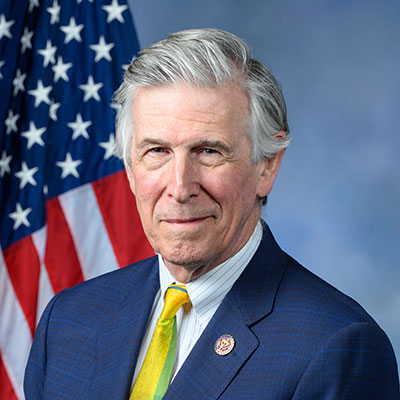Press Releases
Beyer Introduces Wildlife Corridors Conservation Act To Protect BiodiversityLegislation Endorsed By Leading Environmental Organizations and Scientists, Including Biologist E.O. Wilson
Washington,
December 7, 2016
This week, Representative Don Beyer introduced the Wildlife Corridors Conservation Act of 2016 to begin reversing the tide of habitat loss and fragmentation for U.S. fish, wildlife, and plant species. Wildlife corridors are stretches of habitat that allow species to move from one area of habitat to another for such purposes as accessing resources, establishing new territories, shifting ranges, promoting gene flow, and adapting to the impacts of a changing climate. Corridors have been successfully implemented around the world and throughout the U.S., yet current law provides limited requirements for land and water managers to address species’ connectivity needs. “With roughly one in five animal and plant species in the U.S. at risk of extinction due to habitat loss and fragmentation, one of the simplest yet most effective things we can do is to provide them ample opportunity to move across lands and waters,” said Rep. Beyer. The Wildlife Corridors Conservation Act establishes a National Wildlife Corridors System to ensure that species are able to move between habitats less encumbered by obstacles. The bill directs key Federal land and water management agencies to work with each other, as well as with States, tribes, local governments, and private landowners, to develop and manage national wildlife corridors in accordance with existing laws and the habitat connectivity needs of native species. Paired with a new public-facing geographic information system (GIS) database of corridors and modest additional funding to the key agencies, the National Wildlife Corridors System promises the framework to strengthen fish, wildlife, and plant species populations, while at the same time improving recreational opportunities and roadway safety for people. The bill enjoys broad support from the scientific community and more than 60 conservation organizations, including the National Wildlife Federation. "The Wildlife Corridors Conservation Act would provide the most important step of any single piece of legislation at the present time in enlarging the nations protected areas and thereby saving large swaths of America’s wildlife and other fauna and flora, especially in this critical time of climate change and shifting locations of the original environments in which a large part of biodiversity has existed,” renowned biologist E.O. Wilson said of the bill. "Habitat loss and fragmentation are the biggest drivers of species declines," said Susan Holmes, Policy Director for the Wildlands Network. "We thank Congressman Beyer for introducing this important legislation to better connect wildlife, from the bald eagle to the Florida panther, with important habitat." “Corridors increase wildlife movement between habitat areas by approximately 50 percent compared to areas not connected by corridors. By creating a system of national wildlife corridors, this bill will help protect and restore America’s wildlife,” said Leda Huta, Executive Director of the Endangered Species Coalition. “Defenders of Wildlife appreciates Representative Beyer’s leadership in protecting America’s wildlife and their habitats through this strategic and collaborative approach to conservation planning,” said Mark Salvo, Vice President of Landscape Conservation at Defenders of Wildlife. “Connecting our public wildlands and waters is key to the survival of a diverse array of treasured species, from the grizzly, to the elk, to the monarch butterfly. The Wildlife Corridors Conservation Act is an investment in our natural heritage and the type of proactive wildlife stewardship that transcends political affiliation, speaking to the heart of our American values.” Text of the bill can be read here. The Wildlands Network has also created a fact sheet for the Wildlife Corridors Conservation Act, as well as facts sheets for potential impacts of the bill on specific species, including the grizzly bear, the monarch butterfly, the Florida panther, and the pronghorn. |

